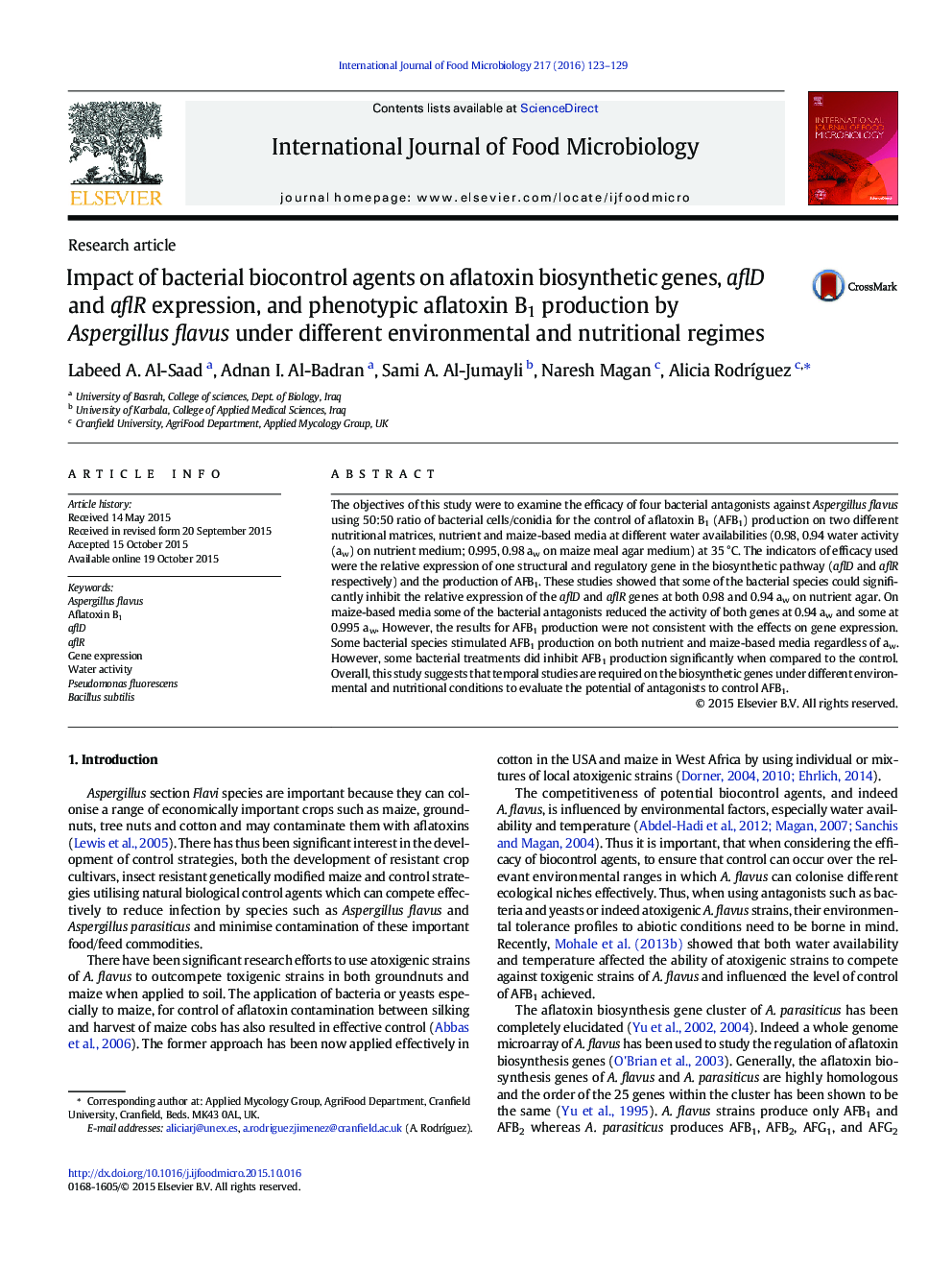| کد مقاله | کد نشریه | سال انتشار | مقاله انگلیسی | نسخه تمام متن |
|---|---|---|---|---|
| 4366405 | 1616566 | 2016 | 7 صفحه PDF | دانلود رایگان |

• Efficacy of four bacterial antagonists for control of AFB1 by A. flavus was examined.
• With 50:50 ratio of cells/conidia differential control was achieved, depending on nutrition and aw.
• Bacteria species inhibited the relative gene expression of the AFB1 biosynthetic genes aflD and aflR.
• AFB1 inhibition was not consistent with effects on gene expression.
The objectives of this study were to examine the efficacy of four bacterial antagonists against Aspergillus flavus using 50:50 ratio of bacterial cells/conidia for the control of aflatoxin B1 (AFB1) production on two different nutritional matrices, nutrient and maize-based media at different water availabilities (0.98, 0.94 water activity (aw) on nutrient medium; 0.995, 0.98 aw on maize meal agar medium) at 35 °C. The indicators of efficacy used were the relative expression of one structural and regulatory gene in the biosynthetic pathway (aflD and aflR respectively) and the production of AFB1. These studies showed that some of the bacterial species could significantly inhibit the relative expression of the aflD and aflR genes at both 0.98 and 0.94 aw on nutrient agar. On maize-based media some of the bacterial antagonists reduced the activity of both genes at 0.94 aw and some at 0.995 aw. However, the results for AFB1 production were not consistent with the effects on gene expression. Some bacterial species stimulated AFB1 production on both nutrient and maize-based media regardless of aw. However, some bacterial treatments did inhibit AFB1 production significantly when compared to the control. Overall, this study suggests that temporal studies are required on the biosynthetic genes under different environmental and nutritional conditions to evaluate the potential of antagonists to control AFB1.
Journal: International Journal of Food Microbiology - Volume 217, 18 January 2016, Pages 123–129